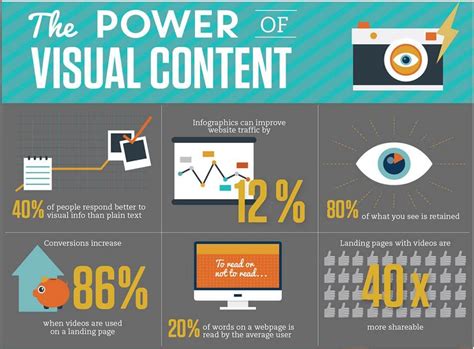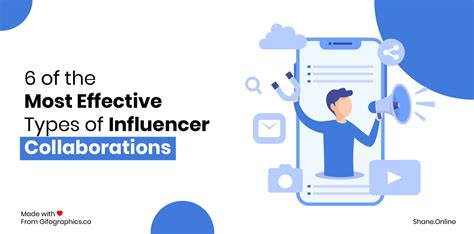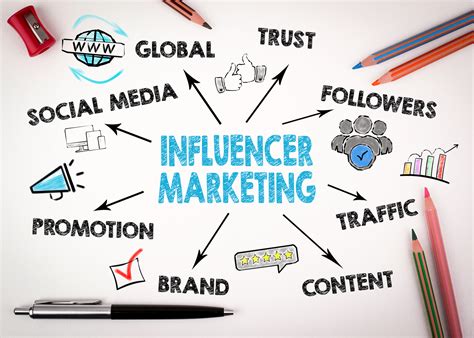In the ever-evolving landscape of digital marketing, it is imperative for businesses to effectively reach their target audience. Crafting compelling and captivating content, coupled with astute promotional strategies, has become a crucial aspect of successful online brand presence. In this article, we will explore some insights and techniques to enhance your content marketing endeavors.
Firstly, harness the power of engaging storytelling. Storytelling is a formidable tool that captures the attention of readers, creating an emotional connection and stimulating their interest. By incorporating powerful narratives into your content, you can leave a lasting impact on your audience and inspire them to take action.
Furthermore, it is essential to embrace the strength of visual elements. With the proliferation of social media and the limitation of attention spans, eye-catching visuals can make your content stand out amid the saturated digital space. Utilize captivating images, infographics, and videos to augment your message, enabling it to resonate with your target audience.
Identifying Your Target Audience
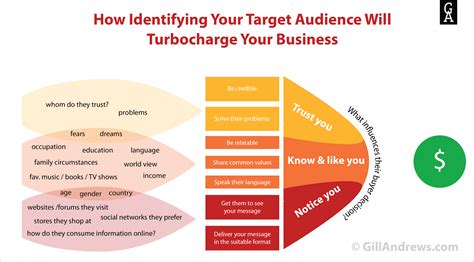
Understanding who your content is intended for is a crucial aspect of developing an effective content marketing strategy. By defining your target audience, you can tailor your content to meet their specific needs and interests, ultimately enhancing engagement and driving conversions.
When determining your target audience, it is important to consider various factors such as demographics, psychographics, and behavior patterns. Demographics include characteristics like age, gender, location, and income level, while psychographics delve into their interests, attitudes, and lifestyles. By analyzing these aspects, you can gain insights into who your audience is and what motivates them.
A target audience can also be identified based on their behavior patterns, such as their consumption habits and preferences. This could include the platforms they use, the types of content they engage with, and their purchase behaviors. Understanding these patterns can help you create content that resonates with your audience and meets their expectations.
| Tips to Define Your Target Audience: |
| 1. Conduct Market Research: Utilize surveys, interviews, and data analysis to gain insights into your audience's demographics, psychographics, and behavior patterns. |
| 2. Identify Specific Needs: Determine the pain points and challenges that your target audience faces, and tailor your content to provide solutions and address their unique concerns. |
| 3. Analyze Competitors: Study your competitors' target audience to identify gaps and opportunities in the market. Differentiating yourself can help you better attract and engage your ideal customers. |
| 4. Use Social Listening: Monitor social media platforms and online communities to gain insights into what your target audience is talking about, what interests them, and what topics they engage with the most. |
| 5. Track and Analyze Data: Utilize analytics tools to track the performance of your content and identify which types of content resonate most with your target audience. Use this data to refine your content strategy. |
By defining your target audience, you can create content that speaks directly to them, effectively capturing their attention, and driving meaningful actions. Remember, understanding your audience is the foundation for developing successful content marketing strategies.
Create Valuable and Relevant Content
In the realm of online communication, it is of utmost importance to develop and distribute content that is both high-quality and relevant. The effectiveness of content marketing strategies relies on the ability to captivate and engage the target audience through valuable information that meets their needs and sparks their interest. In order to achieve this, it is essential to focus on creating content that is informative, engaging, and tailored to the specific interests and preferences of the target audience.
To create high-quality and relevant content, it is essential to thoroughly research and understand the target audience. This involves gaining insights into their demographics, interests, and requirements. By understanding who they are and what they seek, it becomes possible to create content that caters to their needs and aligns with their preferences. Additionally, keeping up with the latest industry trends and staying informed about current topics of interest enables the creation of relevant and timely content that resonates with the target audience.
- Address Pain Points: Identifying the pain points or challenges faced by the target audience and addressing them in the content demonstrates empathy and establishes expertise.
- Provide Actionable Solutions: Offering practical and actionable advice or solutions in the content ensures its value and usefulness to the audience.
- Utilize Visual Elements: Incorporating visual elements such as images, infographics, or videos can enhance the appeal and engagement of the content, providing a richer experience for the audience.
- Incorporate Storytelling: Sharing stories and anecdotes within the content can help to create an emotional connection with the audience and make the content more relatable and memorable.
- Encourage Interaction: Incorporating interactive elements, such as polls, quizzes, or surveys, encourages audience participation and engagement, fostering a sense of connection and involvement.
By consistently creating high-quality and relevant content that meets the needs and interests of the target audience, businesses can establish themselves as authorities in their respective industries and build trust and loyalty among their audience. This, in turn, leads to increased brand recognition, customer engagement, and ultimately, business growth.
Optimize your Content with SEO Techniques
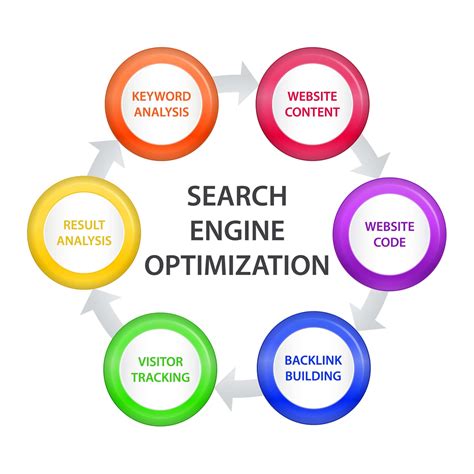
In order to enhance the visibility and reach of your online content, it is crucial to utilize effective SEO techniques. By incorporating these strategies, you can optimize your content for search engines and improve its chances of ranking higher in relevant search results.
One of the key aspects of SEO is keyword research. Identifying the right keywords that are relevant to your content and target audience can significantly impact your visibility in search engines. Including these keywords strategically throughout your content can help search engines understand the context and relevance of your content.
In addition to keyword optimization, it is important to focus on creating high-quality and engaging content. Search engines not only consider the relevance of your keywords but also prioritize content that provides value to users. By producing authoritative and informative content, you can attract more organic traffic and increase your chances of ranking higher in search results.
Another crucial SEO technique is optimizing your website's structure and navigation. Search engines prefer websites that are user-friendly and easily accessible. Therefore, it is essential to ensure that your website is well-organized, with clear navigation and relevant internal linking. This can improve user experience and increase the chances of search engines crawling and indexing your content effectively.
Additionally, incorporating social media into your content marketing strategy can greatly enhance your SEO efforts. Sharing your content on various social media platforms can increase its visibility and generate more backlinks, which are crucial for search engine rankings. It also allows for greater engagement and interaction with your target audience, further boosting your online presence.
In conclusion, by incorporating effective SEO techniques into your content marketing strategy, you can significantly improve the visibility and reach of your content. By conducting thorough keyword research, creating high-quality content, optimizing website structure, and utilizing social media, you can enhance your chances of ranking higher in search engine results and attracting more targeted traffic to your website.
Boost Your Digital Presence with Social Media Platforms
In today's interconnected world, building an online presence is crucial for the success of any business or brand. One highly effective way to enhance your digital presence is by utilizing various social media platforms. These platforms offer countless opportunities to engage with your target audience, increase brand awareness, and drive traffic to your website.
1. Create Engaging Social Media Profiles When establishing your presence on social media platforms, it is important to create profiles that are unique, compelling, and resonate with your brand's values. Use captivating visuals, interesting descriptions, and consistent branding across all your profiles to ensure a cohesive and memorable presence. |
2. Leverage Multiple Platforms Don't limit yourself to just one social media platform. Take advantage of the diverse range of platforms available to reach a wider audience. Each platform has its own strengths and demographics, so tailor your content accordingly to maximize engagement and reach. |
3. Engage and Interact with Your Audience Social media is not a one-way communication channel; it is an opportunity to connect and engage with your audience. Respond to comments, messages, and mentions promptly, showing genuine interest in what your audience has to say. Encourage discussions, ask questions, and foster a sense of community to build a loyal following. |
4. Utilize Visual and Interactive Content Visual and interactive content tend to captivate users' attention and generate higher engagement rates. Use eye-catching images, videos, infographics, and interactive elements like polls or quizzes to make your content more appealing and shareable. |
5. Analyze and Optimize Your Social Media Strategy Regularly monitor and analyze the performance of your social media efforts. Identify which platforms and types of content are resonating the most with your audience. Use this data to optimize your strategy, make informed decisions, and continually improve your content marketing efforts. |
Plan and Organize Your Content with a Calendar

In order to boost the effectiveness of your content marketing efforts, it is crucial to develop a strategic plan for creating and distributing your content. A content calendar serves as a valuable tool in organizing and scheduling your content, ensuring that you consistently deliver high-quality and relevant information to your target audience.
Creating a content calendar involves mapping out your content topics, themes, and formats over a specified period of time. By outlining your content in advance, you can maintain a consistent publishing schedule and avoid last-minute scrambling to come up with ideas. This systematic approach allows you to align your content creation efforts with your marketing goals and helps you stay focused on your brand messaging.
Using a content calendar provides numerous benefits, including improved organization and planning, better content diversity, and enhanced audience engagement. By planning your content in advance, you can ensure that your message remains consistent and aligned with your brand's values. It also allows you to incorporate a variety of content formats, such as blog posts, videos, infographics, and social media updates, to cater to different audience preferences.
Additionally, a content calendar facilitates collaboration within your team, as it provides a centralized platform for everyone involved in the content creation process to track progress and contribute their ideas. It helps streamline your workflow, ensuring that all necessary tasks, such as content creation, editing, and promotion, are completed in a timely manner.
Remember to regularly review and update your content calendar to reflect changes in your marketing strategy and industry trends. By constantly evaluating the performance of your content and making necessary adjustments, you can optimize your content marketing efforts for maximum results.
In summary, developing a content calendar is an essential step in effective content marketing. It enables you to plan, organize, and execute your content strategy with precision, resulting in increased brand visibility, audience engagement, and ultimately, business success.
Encourage User Engagement
Drive active participation and interaction with your audience to bolster the effectiveness of your content marketing efforts.
Creating compelling and valuable content is just the first step towards successful content marketing. To truly maximize the impact of your strategy, it is crucial to actively engage with your users. Encouraging user engagement helps build a sense of community and fosters a deeper connection between your brand and your target audience.
One effective way to encourage user engagement is by inviting feedback and soliciting opinions. This can be done through various channels such as social media platforms, blog comments, or online surveys. Actively responding to and acknowledging user feedback shows that you value your audience's opinions and encourages them to continue engaging with your content.
Another method to enhance user engagement is by incorporating interactive elements into your content. This can include quizzes, polls, or contests that encourage users to actively participate and share their results or opinions. Interactive content not only holds the attention of your audience but also encourages them to spend more time engaging with your brand, leading to increased brand awareness and loyalty.
Additionally, incorporating user-generated content into your content marketing strategy can be highly effective. Encourage your audience to share their own experiences, stories, or opinions related to your brand or industry. This not only provides valuable insights and perspectives but also instills a sense of trust and authenticity among your audience. User-generated content can be shared on social media platforms, blogs, or even incorporated into your own content to further engage your audience.
In conclusion, actively encouraging user engagement is a crucial aspect of an effective content marketing strategy. By inviting feedback, incorporating interactive elements, and integrating user-generated content, you can create a more engaging and meaningful experience for your audience, ultimately leading to improved brand awareness and customer loyalty.
Collaborate with Influencers

Building strong relationships with influential individuals can significantly enhance the reach and impact of your content marketing efforts. By forging partnerships with influencers in your industry, you can tap into their extensive network and gain access to a wider audience. Leveraging the credibility and expertise of influencers can help you establish trust, increase brand awareness, and drive meaningful engagement with your target audience.
When collaborating with influencers, it is essential to identify those who align with your brand values and target audience. Look for influencers who have a genuine interest in your industry and possess a strong online presence. Engage in meaningful conversations with potential influencers to ensure a mutual understanding of goals and expectations. Establishing an authentic and long-lasting partnership will enable you to create content that resonates with both the influencer's audience and your target market.
- Co-creation: Collaborate with influencers to create content that delivers value to both their audience and yours. By involving influencers in the content creation process, you can leverage their unique insights and perspectives, resulting in more compelling and relatable content.
- Social media campaigns: Partner with influencers to promote your content through their social media channels. Influencers can provide valuable endorsements and share your content with their followers, significantly expanding your brand's reach and increasing engagement.
- Guest contributions: Invite influencers to contribute to your blog or other content platforms. Their expert opinions and insights can add credibility and diversity to your content, attracting new audiences and fostering a sense of collaboration within your industry.
- Event partnerships: Collaborate with influencers to co-host or participate in industry events, webinars, or podcasts. By leveraging their expertise and network, you can enhance the value of your events, attract a broader audience, and establish your brand as a thought leader within your industry.
In summary, collaborating with influencers can be a game-changer for your content marketing strategies. By building strong relationships, co-creating content, leveraging social media campaigns, inviting guest contributions, and establishing event partnerships, you can amplify your brand's reach and credibility, ultimately driving meaningful results in your content marketing efforts.
Analyze and Measure Results
In the realm of content marketing, assessing the performance and gauging the effectiveness of your strategies is of utmost importance. Tracking, analyzing, and measuring the outcomes of your efforts enables you to make data-driven decisions and continually optimize your approach.
Evaluate the Impact: To accurately evaluate the impact of your content marketing initiatives, it is essential to define clear goals and objectives. Establish key performance indicators (KPIs) that align with your overall marketing objectives and track them rigorously. This allows you to measure the success of your strategies and make informed decisions based on the results.
Monitor Audience Engagement: Understand the pulse of your audience by closely monitoring their engagement with your content. Pay attention to metrics such as page views, time spent on page, social media interactions, and comments. Analyzing this data provides valuable insights into what resonates with your audience and helps you tailor your content to meet their needs and preferences.
Utilize Analytics Tools: Leverage the power of analytics tools to collect, analyze, and interpret data related to your content marketing efforts. These tools offer valuable metrics and insights that can guide your decision-making process. From tracking website traffic to assessing conversions and click-through rates, utilizing analytics tools allows you to understand the performance of your content across various platforms and channels.
Experiment and Refine: Effective content marketing involves a continuous process of experimentation and refinement. Use A/B testing to compare different approaches to your content and determine which resonates best with your target audience. By learning from these experiments and making data-driven adjustments, you can continuously optimize your content marketing strategies and improve their impact.
Measure ROI: Assessing the return on investment (ROI) of your content marketing efforts helps you determine the value it brings to your business. Calculate the costs involved in creating and promoting your content and compare it to the results obtained, such as increased website traffic, lead generation, or conversions. Understanding the financial impact of your content marketing allows you to allocate resources effectively and measure its overall effectiveness.
By dedicating time and effort to analyze and measure the results of your content marketing strategies, you can gain valuable insights, identify areas for improvement, and ensure that your efforts have a significant impact on your target audience and business.
Stay Consistent and Evolve

Staying consistent and constantly evolving are crucial elements of successful content marketing strategies. Consistency ensures that your audience knows what to expect from your brand, while evolution allows you to adapt to changing trends and remain relevant in a dynamic digital landscape.
Consistency builds trust and establishes a strong brand identity. By delivering consistent messages, tone, and style across your content, you create a cohesive experience for your audience. Consistency also helps you build authority and credibility, as it shows that you are reliable and dedicated to providing valuable content.
However, it's important to note that consistency does not mean stagnation. To stay ahead of the competition and maintain audience engagement, you must be willing to evolve. This involves keeping an eye on industry trends, analyzing data, and listening to your audience's feedback.
Evolving your content marketing strategies can include experimenting with new formats, platforms, or technologies. It may also involve adjusting your messaging to reflect societal changes or addressing emerging topics of interest. By embracing change and being open to innovation, you can attract new audiences and keep existing ones engaged.
- Regularly analyze your content performance and metrics to identify areas for improvement.
- Stay updated with industry news and trends to anticipate shifts in your target audience's preferences.
- Engage with your audience through social media, forums, and surveys to gather feedback and understand their evolving needs.
- Test and experiment with different content formats, such as videos, infographics, podcasts, or interactive experiences.
- Collaborate with influencers or industry experts to infuse fresh perspectives into your content.
- Adapt your content strategy based on insights gained from data and audience feedback.
In summary, maintaining consistency while embracing evolution is vital for effective content marketing strategies. By combining a strong brand identity with the ability to adapt to changing trends, you can build trust, engage your audience, and achieve long-term success.
FAQ
What is content marketing?
Content marketing is a marketing strategy that involves creating and distributing valuable and relevant content to attract and engage a specific target audience. It aims to provide useful information, entertain, or solve a problem for potential customers, ultimately driving profitable customer action.
Why is content marketing important for businesses?
Content marketing is important for businesses because it helps build brand awareness, credibility, and trust with customers. It allows businesses to showcase their expertise and position themselves as industry leaders. Moreover, effective content marketing can drive organic traffic to a website, generate leads, and ultimately increase sales and revenue.
What are some effective content marketing strategies?
Some effective content marketing strategies include: identifying your target audience, conducting thorough keyword research for SEO optimization, creating high-quality and original content, utilizing various content formats such as blog posts, videos, infographics, and podcasts, promoting and distributing content through different channels, engaging with your audience through social media and comments sections, and measuring and analyzing the performance of your content to make data-driven improvements.
How long does it take to see results from content marketing?
The timeline to see results from content marketing varies depending on factors such as the competitiveness of the industry, the quality of the content, and the consistency of publishing. Generally, it takes several months to start seeing noticeable improvements in website traffic, brand visibility, and engagement. However, building a strong content marketing strategy requires long-term commitment and continuous efforts to reap sustainable and substantial rewards.







